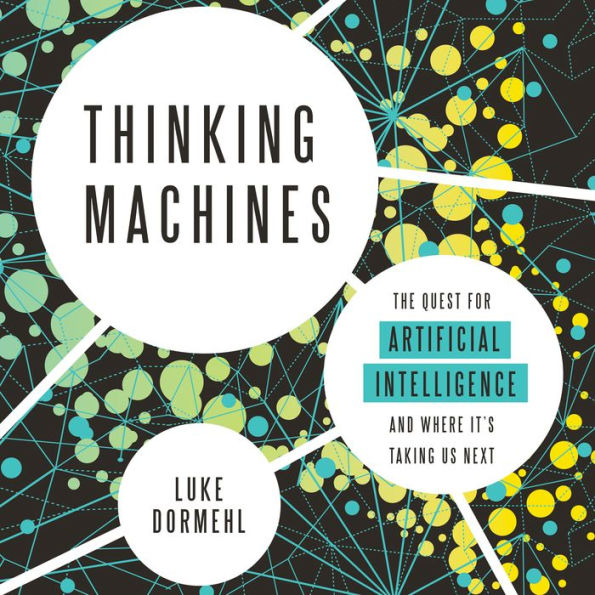Luke Dormehl is the rare lay person…who actually understands the science (and even the math) and is able to parse it in an edifying and exciting way. He is also a gifted storyteller who interweaves the personal stories with the broad history of artificial intelligence. I found myself turning the pages of Thinking Machines to find out what happens, even though I was there for much of it, and often in the very room…I recommend this book to anyone with a lay scientific background who wants to understand what I would argue is today's most important revolution, where it came from, how it works and what is on the horizon.
When most of us think about Artificial Intelligence, our minds go straight to cyborgs, robots, and sci-fi thrillers where machines take over the world. But the truth is that Artificial Intelligence is already among us. It exists in our smartphones, fitness trackers, and refrigerators that tell us when the milk will expire. In some ways, the future people dreamed of at the World's Fair in the 1960s is already here. We're teaching our machines how to think like humans, and they're learning at an incredible rate.
In Thinking Machines, technology journalist Luke Dormehl takes you through the history of AI and how it makes up the foundations of the machines that think for us today. Furthermore, Dormehl speculates on the incredible-and possibly terrifying-future that's much closer than many would imagine. This remarkable book will invite you to marvel at what now seems commonplace and to dream about a future in which the scope of humanity may need to widen to include intelligent machines.
1123954300
In Thinking Machines, technology journalist Luke Dormehl takes you through the history of AI and how it makes up the foundations of the machines that think for us today. Furthermore, Dormehl speculates on the incredible-and possibly terrifying-future that's much closer than many would imagine. This remarkable book will invite you to marvel at what now seems commonplace and to dream about a future in which the scope of humanity may need to widen to include intelligent machines.
Thinking Machines: The Quest for Artificial Intelligence--and Where It's Taking Us Next
When most of us think about Artificial Intelligence, our minds go straight to cyborgs, robots, and sci-fi thrillers where machines take over the world. But the truth is that Artificial Intelligence is already among us. It exists in our smartphones, fitness trackers, and refrigerators that tell us when the milk will expire. In some ways, the future people dreamed of at the World's Fair in the 1960s is already here. We're teaching our machines how to think like humans, and they're learning at an incredible rate.
In Thinking Machines, technology journalist Luke Dormehl takes you through the history of AI and how it makes up the foundations of the machines that think for us today. Furthermore, Dormehl speculates on the incredible-and possibly terrifying-future that's much closer than many would imagine. This remarkable book will invite you to marvel at what now seems commonplace and to dream about a future in which the scope of humanity may need to widen to include intelligent machines.
In Thinking Machines, technology journalist Luke Dormehl takes you through the history of AI and how it makes up the foundations of the machines that think for us today. Furthermore, Dormehl speculates on the incredible-and possibly terrifying-future that's much closer than many would imagine. This remarkable book will invite you to marvel at what now seems commonplace and to dream about a future in which the scope of humanity may need to widen to include intelligent machines.
24.99
In Stock
5
1

Thinking Machines: The Quest for Artificial Intelligence--and Where It's Taking Us Next

Thinking Machines: The Quest for Artificial Intelligence--and Where It's Taking Us Next
FREE
with a B&N Audiobooks Subscription
Or Pay
$24.99
24.99
In Stock

Editorial Reviews
Product Details
| BN ID: | 2940170070763 |
|---|---|
| Publisher: | HighBridge Company |
| Publication date: | 03/07/2017 |
| Edition description: | Unabridged |
Videos

From the B&N Reads Blog
